How this doctor at NewYork-Presbyterian Brooklyn Methodist Hospital spans the realms of Trauma and Critical Surgery
By megan schade • photos by jon Gordon
There was no gap year for Bashar Fahoum, M.D., chief of trauma surgery at NewYork-Presbyterian Brooklyn Methodist Hospital. No surveying of college classes, no soul searching or reading What Color is Your Parachute?
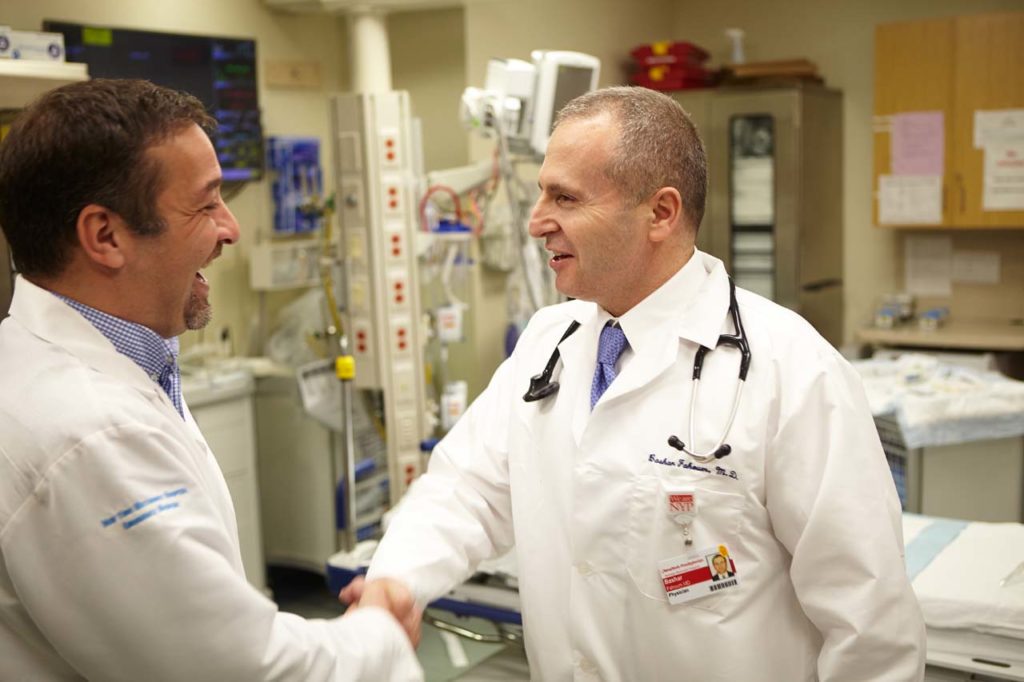
“Surgery was all I ever wanted to do,” recalled Dr. Fahoum. “I come from a family of surgeons and physicians and never thought twice about it—I was always going to be a surgeon.”
After graduating from the School of Medicine at Damascus University in 1988, Dr. Fahoum began his surgical residency at NewYork-Presbyterian Brooklyn Methodist Hospital.
“I came to the United States because I wanted more for my career—more options for my life,” he said.
Surgical residencies traditionally take place over five years, during which the resident rotates through different specialties, including general, head and neck, colorectal, pediatric, reconstructive, bariatric, and critical care/trauma surgery.
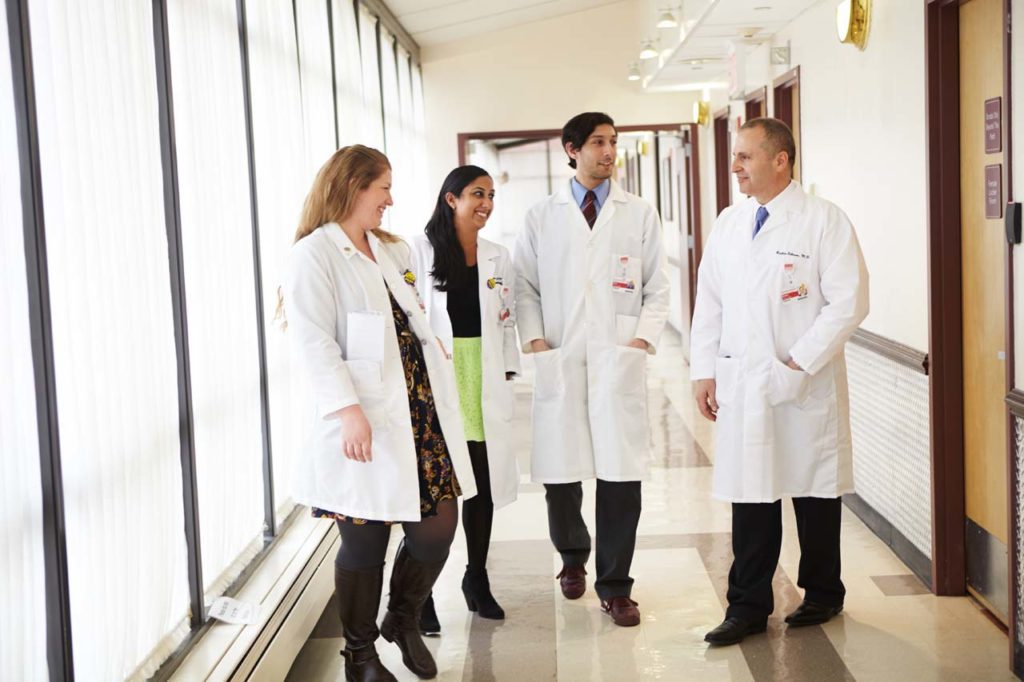
“Surgery is finite; there isn’t that longer-term resolution process that there can be in other areas of medicine. Once I experienced critical care surgery, I was hooked,” said Dr. Fahoum. “I was energized by the immediacy of it. In this type of surgery, there is an acute event that you are focused on diagnosing and treating straightaway.”
When he finished his residency in 1993, the doctor was asked by the chairman of surgery to join the faculty of the Hospital as a full-time surgeon and to teach incoming surgical residents.
“At the time, critical care surgery was coming into its own as a dedicated subspecialty,” Dr. Fahoum explained. “I was honored to join the staff and share my knowledge and enthusiasm with younger doctors, and hopefully, to inspire others to go into this field of surgery.”
Critical care surgery involves acute, life-threatening surgical conditions, including trauma, transplants, burns, and organ failure. The critical care surgeon may also become a surgical intensivist, as Dr. Fahoum did. Surgical intensivists work in surgical intensive care units (SICU) where patients with life-threatening injuries are placed following surgery for observation and continued treatment. A SICU is different from a medical intensive care unit (MICU) because recovery from surgery presents different challenges from recovery to life-threatening medical conditions. However, the surgical intensivist must have familiarity with both surgical and medical conditions.
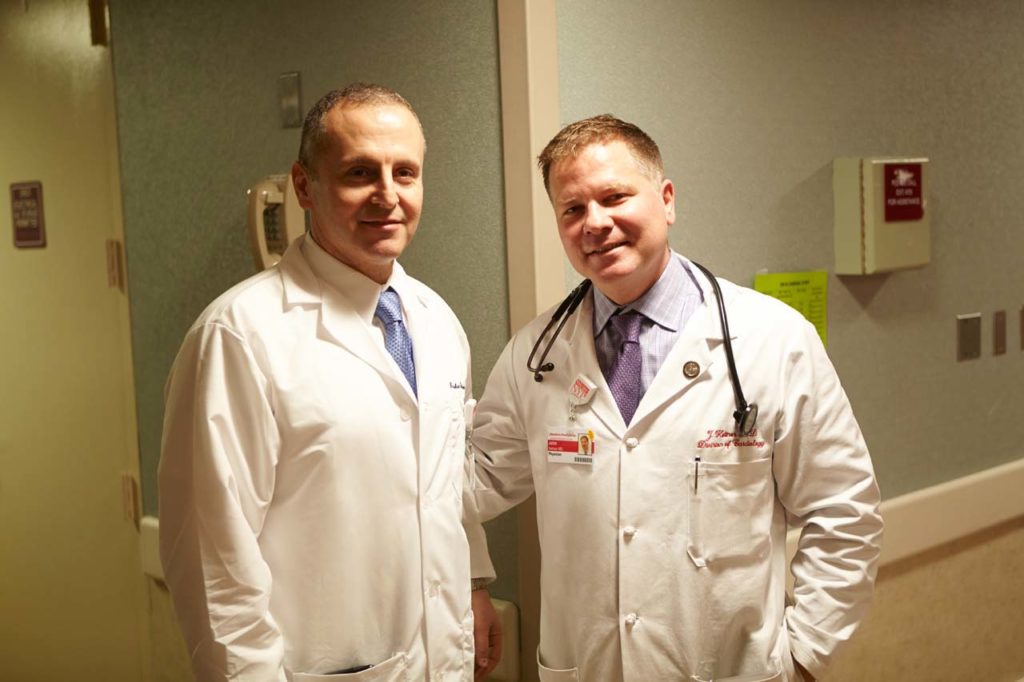
“As an intensivist, you need to be aware of surgical issues, such as the post-operative return of blood flow, tissue condition, and the body’s stress response, but you also need to monitor for medical issues that may be underlying or may occur during recovery from surgery, like pulmonary or cardiac disorders,” said Dr. Fahoum. “The completion of surgery does not occur in isolation; it affects the entire body and the body’s complex systems as well as the surgical site. For instance, if a trauma patient comes in after a car crash, and the leg is broken, a specialist in orthopedic surgery will assess the leg; if there is damage to the head, a specialist in neurosurgery will assess that. A trauma surgeon assesses the impact the crash may have had on the entire body, and coordinates care between the various specialists. The old cliché about the mobile—how touching one area makes the entire shape spin—the same can be said about the human body.”
In 2015, NewYork-Presbyterian Brooklyn Methodist became a New York State Department of Health-designated Trauma Center, a designation granted only to hospitals that can provide life-saving care across the range of emergency scenarios, and that have a continuous process in place for monitoring and improving that care.
“The establishment of the Trauma Center was the result of over a year’s worth of preparation,” said Dr. Fahoum. “That included renovating our Department of Emergency Medicine’s trauma bays, as well as extensive training, trauma simulations, and drills for all surgeons, emergency medicine physicians, nurses, physician assistants, and other staff members involved with trauma response. There is a trauma surgeon on site 24 hours a day. Six attending trauma surgeons serve with me on our trauma team—James Rucinski, M.D., Syed Shah, M.D., Karmina Choi, M.D., Charlene Chao, M.D., Vadim Nakhamiyayev, M.D., and Raffaele Boriello, M.D.”
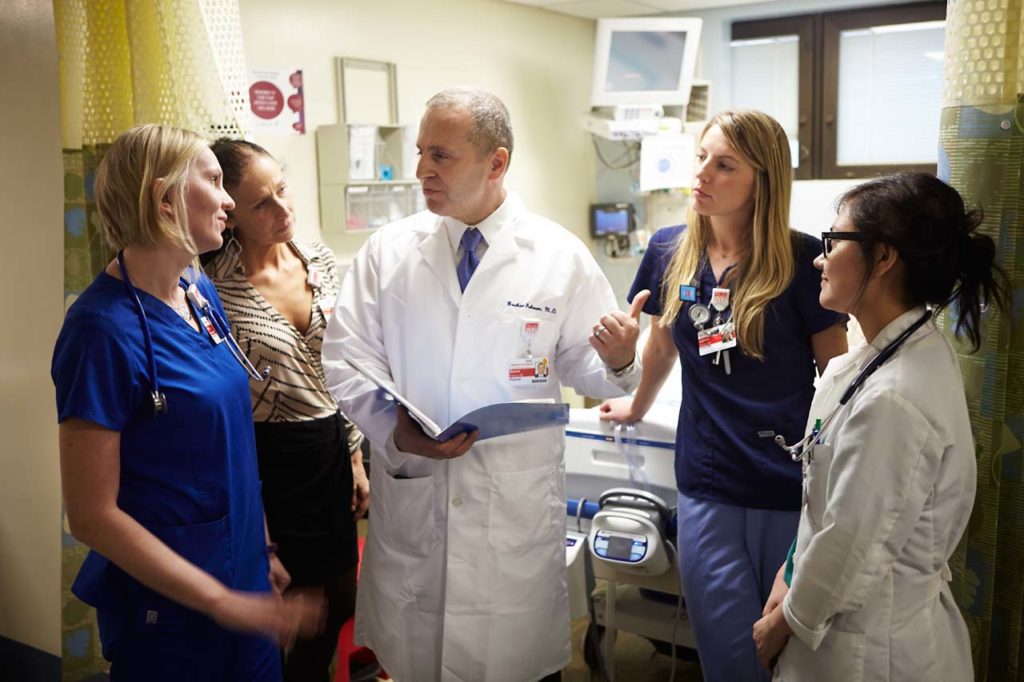
When a patient is brought in as a “code one” (indicating trauma), the entire trauma team rushes to one of the emergency room’s trauma bays. The team is made up of specially trained members of the departments of emergency medicine, nursing, surgery, radiology, respiratory therapy and anesthesiology.
“If emergency surgery is needed, the patient will be taken to the operating room so that the surgeon can stabilize the patient and begin any life-saving surgical treatment that may be necessary,” said Dr. Fahoum. “At times, the trauma surgeon is joined in the operating room with other surgical specialists. Then, once the patient is stabilized and the surgery performed, the patient is transferred to the SICU, where I monitor his or her recovery, facilitate treatment between the departments, and recommend next steps.”
“When we were designated as a trauma center, Dr. Fahoum was asked to lead the new trauma program and also to lead a surgical critical care initiative,” said Michael Zenilman, M.D., chair of surgery. “And he has proven to be a great leader. Each day, he is driven by his passion for excellent care for his patients and his commitment to his staff.”
Dr. Fahoum pointed out that nothing would happen without the critical care nursing staff. “Critical care nurses are highly trained and specialized and are an integral part of ensuring a positive outcome for our patients,” he said. “Joanna Zanko, CCRN, director of nursing, Ashley McNamara, CCRN, director of the SICU and MICU, and Diane Malloy, CCRN, nurse manager, along with the entire team of critical care nurses, administer the plan of care and constantly assess the patients’ conditions. They make sure the ventilators are set correctly, measure a patient’s liquid input and output, and monitor lab results. They ensure that the SICU is a finely tuned machine.”
Running the trauma service and the SICU can be an overwhelming job, but Dr. Fahoum is quick to add that his wife works harder than he does, raising their three daughters, ages two, five, and seven. When he is not in surgery or making rounds in the SICU with residents, he assists her, ferrying his daughters to gymnastics class, ballet lessons, and birthday parties. “Every minute I can, I spend with my family. They are my world, my joy,” he said.
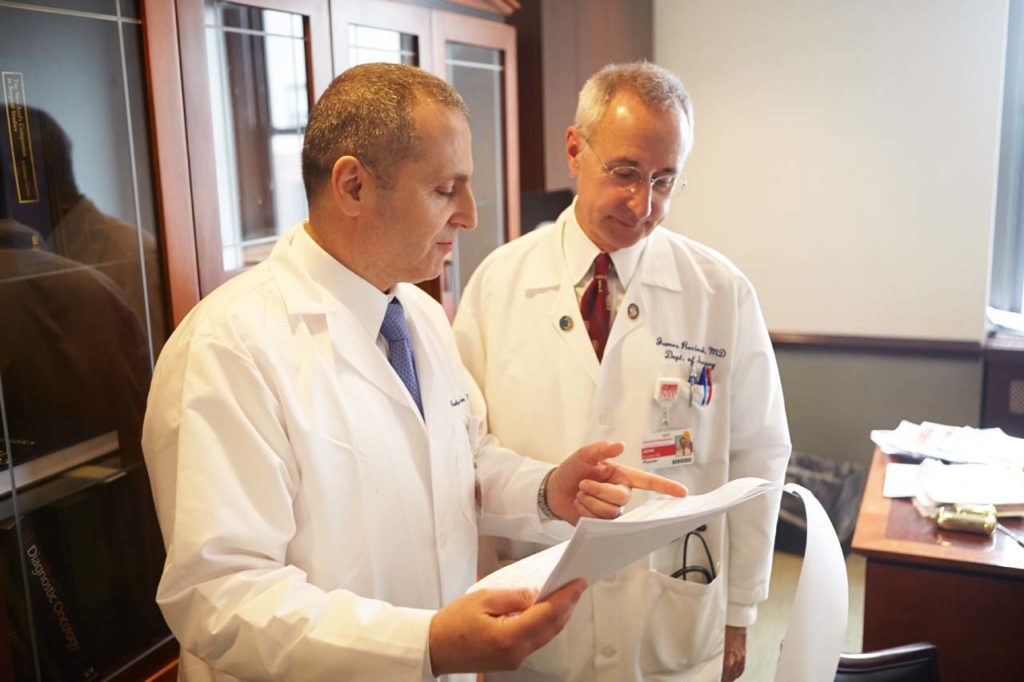
His dedication to his family mirrors his approach to his work. “Dr. Fahoum has tremendous responsibility, but his focus is always on others,” said Paris Dattilo, R.N., trauma program manager. “He is a phenomenal teacher and ensures that everyone who works with him knows that they are all part of the same team with the same goal—the best possible outcome for every patient.”
NewYork-Presbyterian Brooklyn Methodist Hospital
506 6th Street / 718.780.3000 / nym.org
